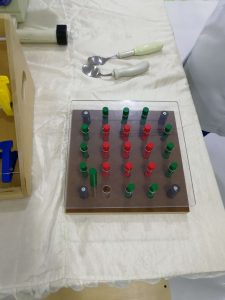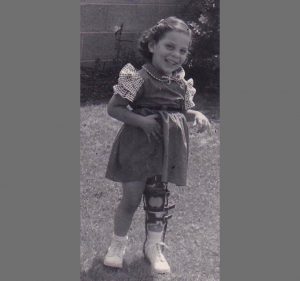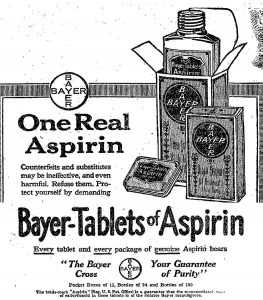
Happy New Year, everyone. This has been a big year for me (Karen Lynn) and for Whispers of Hope. We now get almost 6,000 visits to the website, monthly. The count is growing, too! So, my message of hope in the face of reality for those of us with disabilities is getting out there, and that is wonderful for me! (Image courtesy of Kuldeep, CC BY-SA 4.0, via Wikimedia Commons)
In today’s post, little Kitten (that was me) is tortured by a sadistic physical therapist, and all under the auspices of a school district. As Stan Lee said, “Nuff said…”
Scene 7: On the Mat
“Karen, have a seat on the gray mat. We have a lot to do, today,” Mrs. Schmidt said with a sneer. “And please remember to remove your shoes.”
Karen looked at Mrs. Schmidt with a neutral expression, as if she had heard nothing from the hallway. She ignored the implied insult that she could not remember to remove her shoes before stepping onto the mat. Thick and gray, it rested on a wooden platform, three inches above the floor and a yard from the door. Karen sat and removed her James and Williams high-top brace shoes. After coming to Mrs. Schmidt for a month and a half, she knew what would happen, next, and that she would come out of the therapy session feeling like a half-ton pickup truck that had been hit by a thousand-ton locomotive.
Without looking up, Karen slipped off her brace and right high-top shoe, and then lay down on her back. Mrs. Schmidt sat down hard beside her. Karen noticed that Mrs. Schmidt always left her own shoes on. Perhaps the laced, two-inch heels were hard for her to get off and on, or perhaps wearing them gave her a sense of power.
Mrs. Schmidt straightened one of her own legs, and then grasped Karen’s disabled left hand. After pulling Karen’s arm as straight as she could, she placed Karen’s elbow on her thigh. Using her thigh as a fulcrum, she pressed down on Karen’s wrist, forcing Karen’s elbow to straighten all the way, and then bending the left wrist and fingers back to hyper-extend them.
“Oh, boy!” Karen said softly, in a tone of mock eagerness, then, “Ouch! That hurts! Can you be a little gentler with me, please?”
Mrs. Schmidt smiled in her hard way and looked Karen in the eye.
“You cannot always have your way, my dear girl! Life is about dealing with pain. You have to learn how to handle it, sometime. You’ve been sheltered too much. You have not lived a life like mine. Once, I was a child, too, and I saw people destroyed because they were handicapped or weak.”
“Really,” Karen replied in a sympathetic tone. Mama had told her about the Nazis killing handicapped people as well as Jews, so she knew she would have been at the top of the list for the concentration camps.
“Ja! I learned the hard way how the real world works.”
For a moment, Mrs. Schmidt’s voice had softened, and Karen thought she might have reached her emotionally, but then Mrs. Schmidt loaded on more pressure.
Kitten’s left arm felt like a coiled spring being unwound. Other therapists had extended it slowly with little discomfort, but Mrs. Schmidt stretched it quickly and held it straight. Karen forced herself to count the seconds of the three minutes she knew Mrs. Schmidt would hold it straight. Her bicep and elbow burned and stung even after Mrs. Schmidt let go.
“Karen, you are not cooperating with me, today,” Mrs. Schmidt said, her voice hard, again. “I cannot do any more for you with that exercise. Get onto all fours so I can hyperextend your elbow and arrange your fingers from another angle. They look very curled, today. Hurry up! I cannot understand what takes you so long. You are wasting my time. I cannot wait until you are ready. This session is taking too long. I am due for my coffee and cigarette, and I cannot have them until we finish your program. Hurry up, or I’ll report you to Dr. Lambert for not cooperating with your prescribed treatment.”
Kitten stayed quiet and thought about Mrs. Schmidt’s background, as she eased herself into position. Mrs. Schmidt immediately slammed a sandbag onto her left wrist and held it down while forcing the elbow to bend the wrong way and prying the bent fingers straight.
“Ow! Don’t you care that you’re hurting me?” Karen moaned.
“Karen, you must accept your limitations. You must accept that I am being a little rough because your treatment must be like this. If it is not, then it will not be effective. This is the only way your arm and wrist will straighten out. This is the only way to improve their function. You have to toughen up. My job is to help you get tough, even if it hurts a little.”
Karen twisted her neck to look up at Mrs. Schmidt, but found herself stared down by the PT’s angry gaze. She felt rage touch her as the therapist ran her eyes up and down Kitten’s body, glaring particularly hard at the disabled left side. Karen looked toward Mrs. DeLuca, who was working with another student on the other side of the room, but who refused to meet her eyes. The student looked back with sympathy as Mrs. DeLuca gently worked on her, but as a disabled child, she was afraid to speak up. Kitten did not want to cry, so she said nothing.
“I have created this stretching program especially for you, my dear. I have created it based on my own professional experience. I know what is best for you. I must execute these exercises exactly right, regardless of any little discomfort they may give you or me. This is not the time for feelings or compassion. Our bodies are machines, and we must treat them as such. Do you think I enjoy sitting on this mat? No! But I do it to help you.”
Karen tried not to resist. Resistance increased the pain. Suddenly the three minutes were up. Mrs. Schmidt released her arm and wrist as abruptly as she had taken them.
“Now for your last and final exercise, Karen! We are going to stretch your left heel cord.”
Kitten could not stop herself from wincing. This was always the most painful treatment. She rolled from the all fours position and sat on the mat with her legs straight in front of her. Mrs. Schmidt looked deeply into her eyes as she reached for Karen’s left knee and pushed it hard into the mat. Under Mrs. Schmidt’s pressure, the knee bent the wrong way and immediately throbbed with pain. Mrs. Schmidt smiled as she gripped Kitten’s toes with her other hand.
Karen tried to relax, but the coming agony terrified her, and her muscles involuntarily tightened. Mrs. Schmidt squeezed her toes together, so that they hurt. She pulled the toes toward Kitten’s knee, still looking into her eyes with a darkness.. Karen could not look away, in spite of the pain. She felt tears sting and flow down her cheeks. Mrs. Schmidt squeezed and stretched once, then let the toes move back to their normal position. Karen sniffed to keep herself from whimpering. Mrs. Schmidt squeezed and stretched, again, even harder, and the pain increased. The treatment consisted of five stretches, each one more painful than the last.
“Karen, you must try harder not to resist me,” Mrs. Schmidt said, as she released Kitten’s foot and handed her a tissue. “Now dry your tears and go back to class.”
Karen’s eyes stopped tearing. She wiped them and blew her nose. Looking around, she saw that the therapy assistant and the other child were staring at her, their faces full of shock. Mrs. Schmidt was smiling in a relaxed, satisfied way. She looked happier than she had since Kitten had entered the room.
“Why do you smile, Mrs. Schmidt?” Karen asked.
“I smile because I know how much this is going to help you! I know because I know what is necessary to make this therapy work. I know because I’m not afraid to challenge you.”
Mrs. Schmidt struggled to her feet and flung open the hallway door. “Your session is over, young lady. You can leave, now. It is time for my cigarette break. Try to have a better attitude, next time.”
“Thank you, Mrs. Schmidt. You have a very nice day, too!” Kitten replied.
Original Text ©2022, Karen Lynn-Chlup. All rights reserved.



 In this scene, little Kitten learns to tie her shoelaces, which is a challenge for many people, but remember that she has to do it with only one hand.
In this scene, little Kitten learns to tie her shoelaces, which is a challenge for many people, but remember that she has to do it with only one hand.




